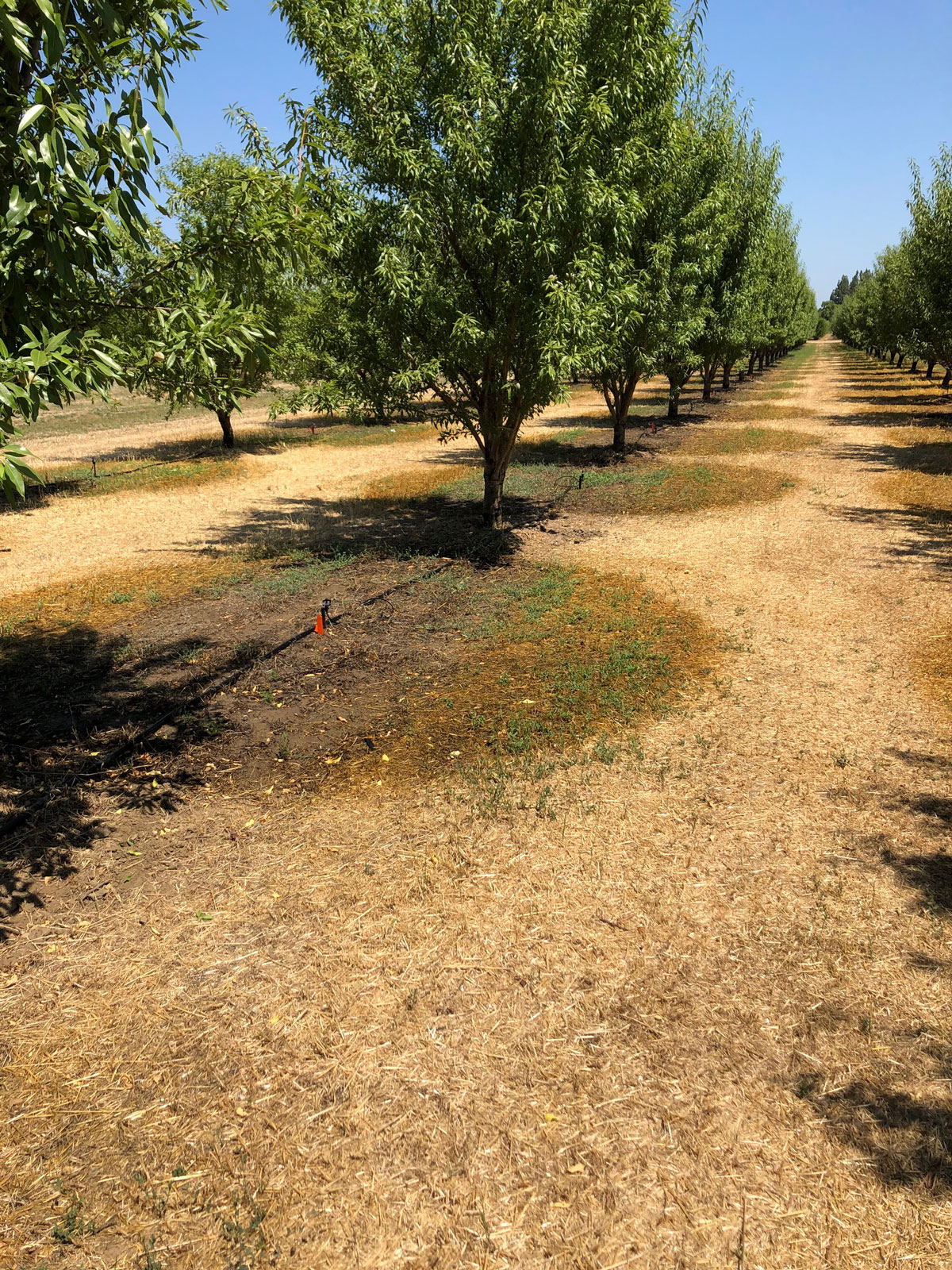
Inducing mild water stress in almond trees prior to shaking provides benefits to tree health and helps avoid shaker injury. Allowing water stress to continue after harvest, however, holds consequences for next year’s production.
During this period, the trees can demand an estimated 12 to15 inches of water based on location and weather. Roughly 70% of this demand is from the six weeks immediately after harvest, when the days are hot and longer.
Sebastian Saa, Almond Board of California’s senior manager for research, said timely and adequate post harvest irrigation is one of the most important factors in the quality of the next year’s bloom.
Saa explained that lack of water post-harvest reduces carbohydrate development, leaving less energy for next year’s flowers. During and after harvest is the period of flower differentiation and adequate water benefits the process, and ensures that blooms will be viable. Timely post-harvest irrigation also helps the tree have a smooth transition into dormancy, as the leaves turn from green to yellow, Saa said, energy is stored to go into strong flowers and a good fruit set.
“Yes, it is a challenge to irrigate during a busy harvest season, but most growers understand the importance of putting water on the trees as soon as possible after harvest is complete,” Saa said.
One of the first tasks for growers is to check their irrigation system for damage during harvest. They should check for leaks and uniformity of water distribution to use their irrigation water efficiently, Saa said.
Irrigation system design can also make a difference in timely post harvest irrigation. The ability to irrigate varieties that have already been harvested while leaving later maturing varieties dry calls for a more complex and expensive system, but adds an extra layer of efficiency.
The Almond Board has a number of online tools to help growers determine irrigation amounts and times post-harvest. The Almond Irrigation Improvement Continuum, developed by Almond Board of California in collaboration with irrigation experts, gives growers a step by step explanation of irrigation management and scheduling practices that fit their soil types and orchard designs.
The Irrigation Improvement Continuum provides a look at a grower’s site-specific irrigation system with the goal of improved efficiency and effectiveness. The Continuum includes measuring irrigation system performance and efficiency, estimating orchard water requirements based on evapotranspiration, determining applied water, evaluating soil moisture and evaluation of plant water status.
















